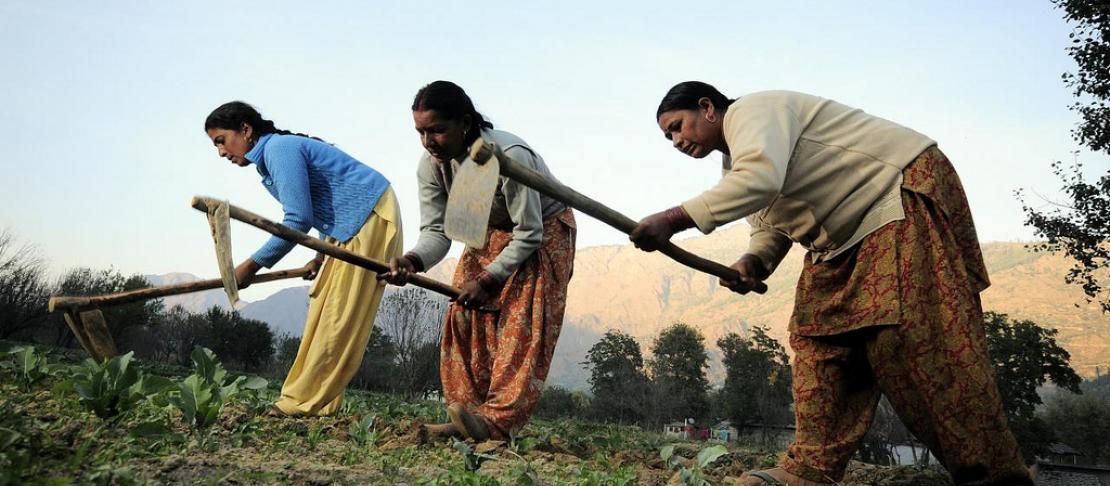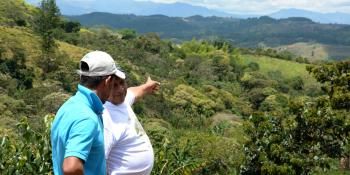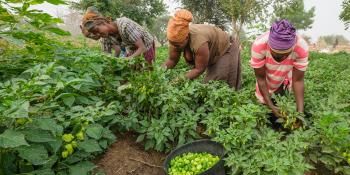Is agricultural adaptation on track to meet the future food production challenge?

Small-scale farmers are making small changes in their agricultural practices. Is this enough to increase their food security?
Smallholder farmers around the world are facing enormous challenges. Agricultural production needs to increase by up to 60% to feed 9 billion people in 2050, and at the same time, climate change is already having negative impacts on smallholder farming systems, particularly in lower-income countries.
How are farmers coping with these challenges?
Researchers from the CGIAR Research Program on Climate Change, Agriculture and Food Security (CCAFS) and partners investigated how well smallholders in lower-income countries are adapting to the many challenges they face, including climate change, what kinds of changes in farming practices they are making and whether these are leading to more sustainable agricultural systems.
The researchers used household surveys and community-level focus group discussions from 5 regions, 21 countries, and 45 sites, covering 315 villages and approximately 6300 households.
The purpose of the surveys was to form a baseline for monitoring and evaluation for CCAFS' work. The surveys were carried out between 2011 and 2014, and will be repeated in 2019 to track changes in key development outcome indicators relating to the food security of households and communities at the sites.
For this study, the researchers used the entire dataset (all sites, all regions, all scales) for the first time, to explore the factors that help explain the relative lack of uptake of new agricultural practices.
Food insecure, hanging in, stepping up, stepping out
The study used the household-level survey data to define a set of criteria to allocate each household to one of the four types: food insecure (not enough food to eat for several months during the year), hanging in (meeting food and other basic needs), stepping up (intensifying agriculture practices), and stepping out (leaving agriculture as a livelihood).The household-level survey asked respondents several questions about the kinds of changes they had made to their farming practices over the last ten years and their reasons for making them.
The researchers then selected households that demonstrated specific characteristics that indicated they belonged to a different category. Afterward, the researchers categorized the sites, where these households are located into a set of site types with different proportions of household types, in relation to factors that may be supporting (or not supporting) households in each site.
In one further step of the analysis, researchers used the survey dataset in an attempt to identify factors that may help or hinder households in becoming more food secure, in stepping up, or in stepping out of agriculture.
The 45 sites in the sample constitute a large collection of case studies in which a harmonized methodology for data collection and analysis was developed and applied.
The results from this study confirm that there are considerable numbers of food-insecure agricultural households across five regions of the globe, ranging from under 5% in Latin America to 32% in East Africa.
Although farmers have been changing their practices over the last decade, the changes being made are likely to be insufficient to increase production to levels that will enhance the food security of significant proportions of the population, especially under projected levels of climate change.
The enabling environment
The study found some commonalities in the enabling environment in the case studies: supporting organizations are particularly important in sites that either have highly diverse household types or are looking to step up; and higher levels of community awareness are associated with lower levels of food insecurity.
Smallholders need to be able to develop strategies that best suit their context but the agricultural research for development (AR4D) community has to go beyond this because the context is almost never fixed, passive or unchangeable.
The options selected by farmers need to match their context, but we need to understand much more about how different elements of the context are enabling adaptation and risk reduction (or not), and for whom; men and women farmers, younger and older ones, all have different needs and priorities.
Even more importantly, AR4D initiatives should also aim to catalyze processes that modify the context to make an enabling environment that facilitates choice, supports inclusive collective action, and enhances adaptive capacity.
In practice, local, national and international institutions, both governmental and non-governmental, need to play a much greater role in shaping the enabling environment.
CCAFS plans to re-run the surveys in many of the case study sites in 2019, using the same basic instruments, to capture changes since the baseline surveys were conducted. This will provide an excellent opportunity to track progress in adaptation in the case study sites, building on the analysis presented in the article.
Download the article: Is agricultural adaptation to global change in lower-income countries on track to meet the future food production challenge?
The article was edited by Lili Szilagyi.
Philip Thornton is the Flagship Program Leader and Laura Cramer is the Science Officer for the CCAFS Flagship on Priorities and Policies for CSA. Patricia Kristjanson is a Senior Scientist for the World Agroforestry Centre (ICRAF). Wiebke Förch is an Advisor on climate-smart agriculture at GIZ GmbH. Carlos Barahona is the Managing Director of Statistics for Sustainable Development. Sonali Pradhan is a Doctoral Candidate at the University of Reading. Lili Szilagyi is the Communications Consultant for the CCAFS Flagship on Priorities and Policies for CSA.



